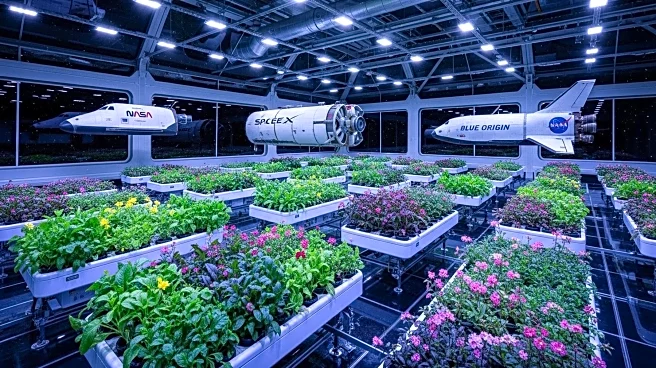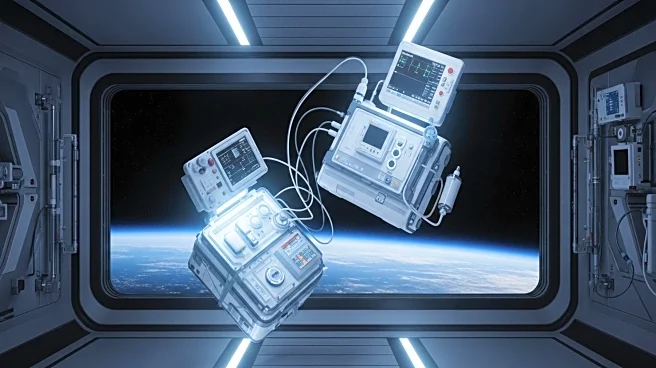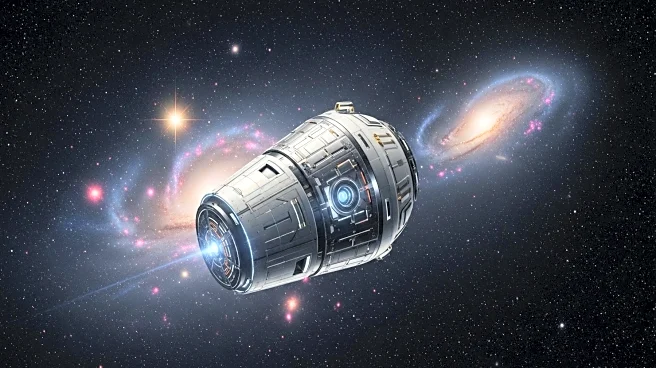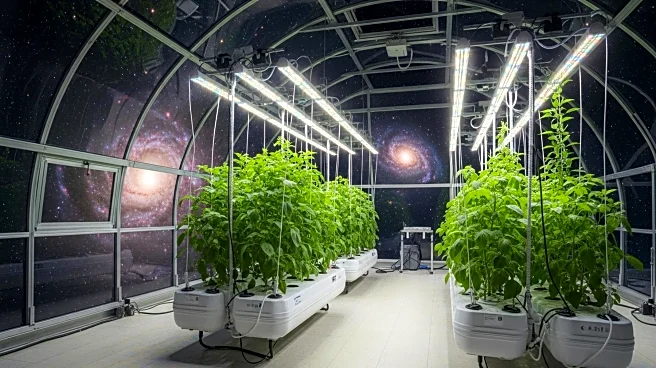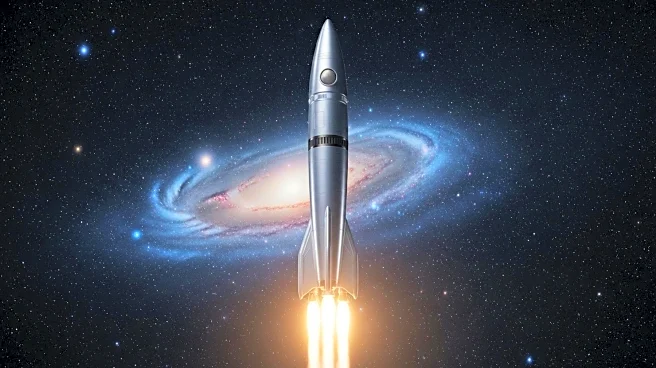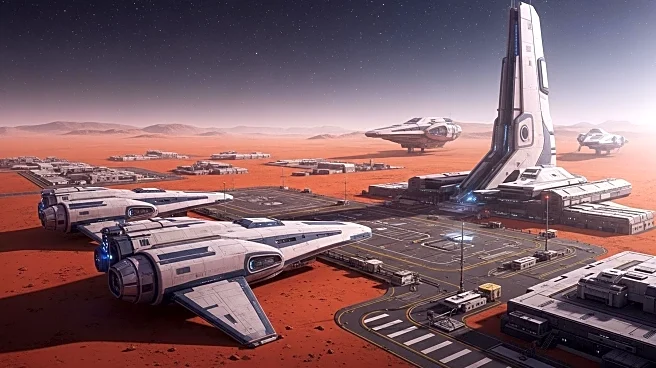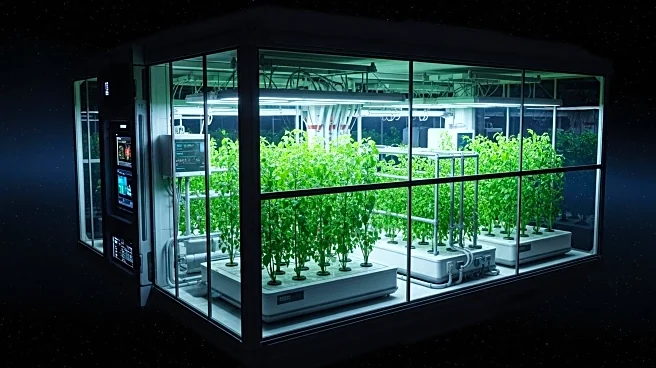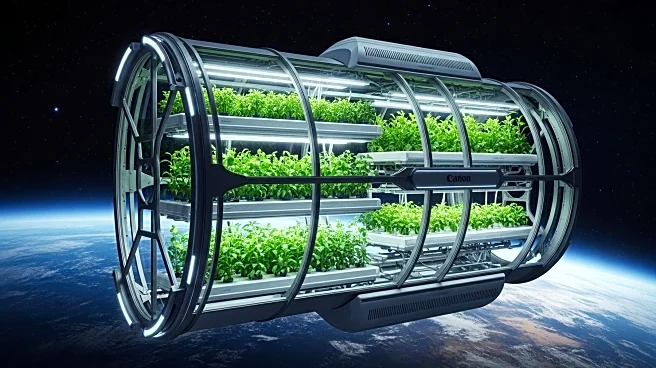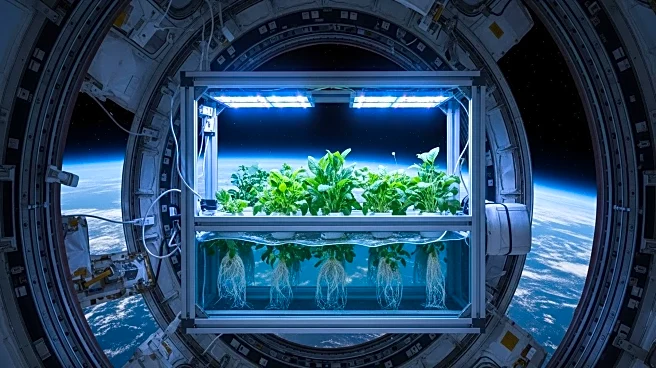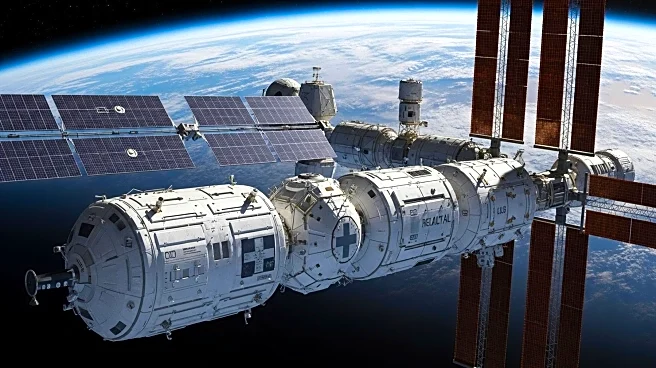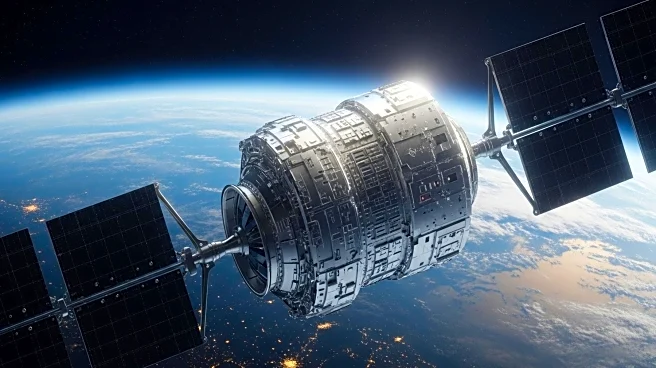What is the story about?
What's Happening?
The space agriculture market is poised for significant growth, driven by major players such as NASA, SpaceX, and Blue Origin. According to a recent market study, the global space agriculture market is expected to expand at a compound annual growth rate (CAGR) of 14.5% from 2025 to 2033, increasing from $250 million in 2025 to $1.2 billion by 2033. This growth is fueled by advancements in technologies like hydroponics, aeroponics, and bioreactors, which are essential for growing crops in space or controlled environments. These innovations support food production for astronauts and potential extraterrestrial colonies. The market is segmented by type, including hydroponics, aeroponics, controlled environment agriculture, bioreactors, and algae farming, and by application, such as long-duration space missions, the International Space Station (ISS), lunar bases, Mars colonization, and research.
Why It's Important?
The expansion of the space agriculture market is crucial for the future of space exploration and sustainability. As space missions become longer and more complex, the ability to produce food in space will be essential for supporting human life beyond Earth. This market growth also presents significant opportunities for technological advancements and commercial space missions. Companies involved in space agriculture can benefit from research funding and technology transfer, potentially leading to innovations that could be applied on Earth. The development of closed-loop systems, bioregenerative life support, and automation are key trends that could revolutionize both space and terrestrial agriculture.
What's Next?
As the space agriculture market continues to grow, stakeholders can expect increased investment in research and development. This could lead to breakthroughs in genetic engineering and vertical farming, further enhancing the efficiency and sustainability of space-based food production. Additionally, collaborations between government space agencies and private companies may accelerate the commercialization of space agriculture technologies. The focus will likely remain on overcoming challenges such as high costs, technical difficulties, and resource limitations, which are critical for scaling up these technologies for broader applications.
Beyond the Headlines
The implications of space agriculture extend beyond immediate technological and economic benefits. Ethically, the ability to sustain human life in space raises questions about the long-term impact of human colonization on other planets. Culturally, the advancements in space agriculture could inspire a new generation of scientists and engineers, fostering interest in STEM fields. Legally, the expansion of space agriculture may necessitate new regulations and international agreements to address issues related to space resource utilization and environmental protection.
AI Generated Content
Do you find this article useful?
